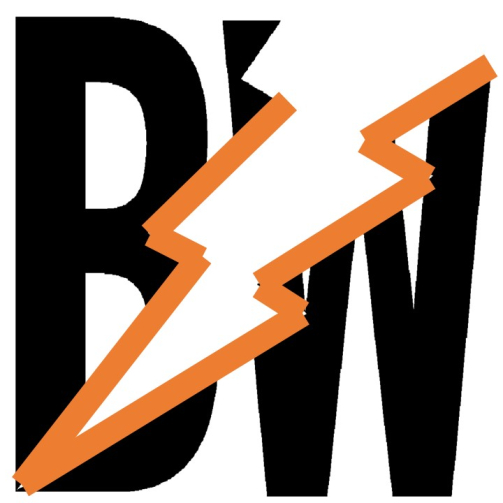Induction motor is very important machine such that maximum motors running in the industry are Induction motors. That's why it becomes crucial to know every aspect of Induction motor like It's starting, running & faults.
Motor faults are frequent in industry which occurs due to several reasons. Five major reasons which damages the Induction motor been discussed in another post; 5 Reasons that damages Induction motor
In this post, We will learn the whole process of motor testing Whether motor's condition optimum for running or not. Detecting the motor's fault is not a difficult task rather than it is an interesting procedure.
In this post, We will learn the whole process of Induction motor testing.
(NOTE: In this post, Motor word is used for Induction motor only !)
HOW TO TEST AN INDUCTION MOTOR ?
Before testing the Induction motor, The first thing is whether motor's load output & input supply is connected OR not ! If connected than disconnect both the load output mounted on shaft & input power supply from terminal box of the motor.
There are three steps for induction motor testing; VISUAL INSPECTION, ELECTRICAL TESTING & TESTING AT RUNNING CONDITIONS.
VISUAL INSPECTION
---Many components have been connected with induction motor such that Fan & fan cover, connection box with connection strip inside. Every single component of motor play an important role & All these components should present !
For Example In an air cooled Induction motor, Fan connected at the back of motor shaft produces an air flow around the stator's frame. Fins around the stator frame provides the larger surface area for maximum cooling & fan in along with fan cover sweeps the heat from the stator's surface.
---The stator's surface area should be clean so that maximum heat get eliminated from stator's surface.
---There should not be any type of breakage around the motor frame & motor end covers.
 |
| 5.5kw flange type Induction Motor |
---Observation while rotating the shaft with hand
Rotate the shaft with hand & feel the shaft while rotating. It should rotate freely without any type of blockage, vibration & noise. While rotating shaft alignment should also be checked; it should be straight.
At starting When we are new in this field; it is difficult to observe that minor noise & vibration. But more we observe Better we become.
ELECTRICAL TESTING
---Winding Continuity & Resistance
There are two types of winding connections in induction motor, One is STAR & another is DELTA.
Total winding is complete composition of 3 coils. Each coil has 2 terminals; In total all the three coils have 6 terminals.
If we short each terminal of all 3 coils as a single junction then a STAR connection get formed.
If we short terminals of coils in a pair such that terminals of two different coil constitute a node, then a DELTA connection get formed.
For winding testing for better results, Disconnect the connections whether it is star or delta such that all 6 terminals get available. Then check the continuity & resistance of each coil, Resistance value of all coils should be equal with negligible ± value.
Some times; In small rating motors, There are only 3 terminals because of Motor connections whether star or delta already been done inside the winding. At such condition, We can use only 3 terminals of induction motor. Resistance value between all 3 coils should be equal.
---Insulation testing
With the help of megger OR Insulation tester, we can find out the insulation of each coil with respect to the motor body. It should be more than 1mega ohm.
After clearing both visual & Electrical test we can proceed further for the last step which is testing at running conditions.
TESTING AT RUNNING CONDITIONS
---No Load test
No load test means running the motor without any load. For this, DOL starter can be used.. Note the ampere loading on all the 3 phases, Ampere loading should be balanced in between three phases.
---Test at loaded condition
Run the motor at loaded condition. If possible, gradually increase the load on induction motor. Note down the load current on all 3 phases. While increasing the load observe the changes in noise & vibration level.
For better understanding, Test certificate of 3 phase 2.2KW-4Pole induction motor is explained below:
 |
| Test Certificate 3phase Induction motor by SIEMENS |
This test certificate contains mainly two section Name plate data & Test Results
NAME PLATE DATA
Motor Type: 1LE7501-1AB43-5FA4
Power Output : 2.2KW
Current : 4.8Amps
Speed : 1440 rpm
Frequency : 50±5%
Efficiency : 84.3
Power Factor : 0.76
Connection : Delta
Protection : IP55
Duty : S1
Insulation Class : F
Frame Size : 100L
Ambient Temperature : -20°C to 50°C
Terminal box position : Top
Construction : IMB5
TEST RESULTS
RESISTANCE OF STATOR WINDING
Average resistance delta connection 5.7133(ohms)
NO LOAD TEST
Polarity & Connection : 4-Delta
Voltage : 415 VAC
Current : 2.96, 3.04, 3.05
Input Power : 215Watt
LOCKED ROTOR TEST
Polarity & Connection : 4-Delta
Voltage : 81 VAC
Current : 4.8 Amps Average
Input Power : 369Watt
HIGH VOLTAGE TEST
Voltage : 2KV
Duration : 1minute
INSULATION RESISTANCE TEST
Stator Resistance : >50mega ohms
Hope ! Post is beneficial. If you have any doubt, Suggestion or query please do comments.


